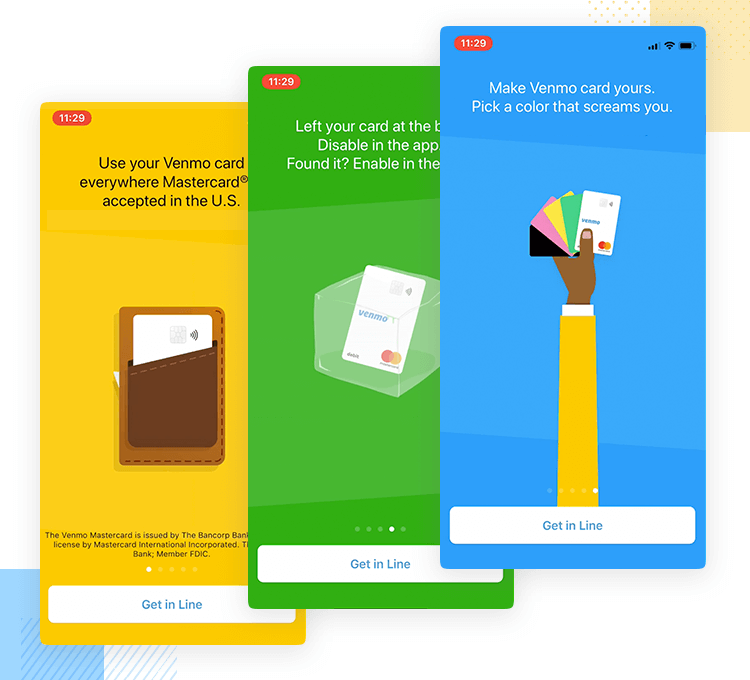
UX designers often use prototypes to validate their designs. These interactive prototypes allow designers to collect feedback on their ideas before they are fully developed. Prototyping not only provides a proof-of-concept for the product but also reduces project costs.
UX designers are able to create prototypes using a variety of methods. Many of these tools have both interactive and visual capabilities, which can help make the process easier. Many UI/UX tools have a feature that allows team collaboration. This allows UX designers to collaborate with stakeholders, developers and other members of the team. It is important that you choose the right tool for your needs and goals.

A low-fidelity prototyping is a mockup without any interaction. These can however be upgraded to more detailed prototypes as the design work progresses. You can create low-fidelity prototypes in many ways, including on paper or with an online design tool. These prototypes can be used to sketch information architecture and user flows. Although they are not as interactive and flexible as high-fidelity prototypes, they can be a great way for designers to explore their ideas.
High-fidelity prototypes are created to look and feel just like the final product. Although interactive prototypes are generally more engaging, they may still only have limited functionality. High-fidelity prototypes often include clickable content and hierarchy. Some examples of high-fidelity prototypes include Framer and Marvel.
Adobe XD is a vector-based UX design app that is available on both mobile and desktop. It is free to download, but you can purchase a paid edition. The app offers a variety of features, including user testing, data analysis and feedback management. It integrates with Adobe CC, the suite of apps from Adobe and Portfolio platform Behance. There are also mini-courses and thought pieces in Adobe's blog.
Sketch is another popular UI/UX design tool. Users can quickly create wireframes with the app's easy interface. The app also features advanced controls over vectors and layers. Another advantage of Sketch is its integration with 3rd-party extensions. Sketch allows users to add comments to their designs. It's also mobile-friendly. Since the app is free, it's often used by non-designers to create user-flows and other visual elements.

Balsamiq, another prototyping tool, is also available. Its drag-and drop design interface makes it simple to build prototypes of low and high-fidelity. It is compatible with all major operating systems. However, it can be difficult to learn.
UX designers have to be able create interactive prototypes. This requires understanding the audience and determining their expectations. Then, a designer will map out the user journey and develop seamless design strategies for endpoints.
It is not uncommon for the final product to require several rounds of testing. However, prototypes allow you to ensure that the product will be easy to use and enjoy by users. Prototypes can be helpful in two ways. They reduce project costs and allow users to provide feedback. The success of a prototype is ultimately dependent on its alignment with the project's goals, objectives, and user needs.
FAQ
What Kinds Of Websites Should I Make?
Your goals will determine the answer to this question. It may be best to sell online your products to build a company around your website. To make this happen, you'll need a reliable eCommerce website.
Blogs are another popular type of website. Each of these requires different skills and tools. For instance, if you want to set up a blog, you will need to learn about blogging platforms such as WordPress or Blogger.
You will need to decide how to customize your website's look when you select a platform. There are many templates and themes that are free for each platform.
Once you've selected a platform to build your website, you can start adding content. Images, videos, text, and other media can all be added to your pages.
You can publish your website online once you have launched it. Visitors can view your site online once it has been published.
What HTML and CSS are available to help me build my website?
Yes! If you've been following along so far, you should now understand how to start creating a website.
After you have learned how to structure a website, you will need to know HTML and CSS.
HTML stands for HyperText Markup Language. Think of it like writing a recipe for a dish. You'd list ingredients, instructions, and directions. HTML allows you to indicate to a computer which portions of text are bold, italicized and underlined. It also lets you know which part of the document is linked. It is the language used to describe documents.
CSS stands for Cascading Style sheets. This is a stylesheet for recipes. Instead of listing each ingredient and instructing, you can write down general guidelines for font sizes, colors and spacing.
HTML tells a browser how to format a webpage; CSS tells a browser how to do it.
Don't be afraid to ask questions if you don’t understand any of these terms. Follow the tutorials below, and you'll soon be making beautiful websites.
What is a static web site?
A static website can be hosted anywhere including Amazon S3, Google Cloud Storage (Google Cloud Storage), Windows Azure Blob storage and Rackspace Cloud files. In addition, you can also deploy a static site to any platform that supports PHP, such as WordPress, Drupal, Joomla!, Magento, PrestaShop, and others.
Static web pages can be easier to maintain as they don’t need to send requests back and forward between servers. They load quicker because they don't need to send requests back and forth between servers. These are just a few reasons why static web pages can be a better option for small companies who don't have the resources or time to maintain a website.
Can I use a framework or template on my website?
Yes! Yes! Many people use pre-built frameworks or templates when creating websites. These templates contain all the code that is required to display information.
These templates are the most in-demand:
WordPress – One of the most well-known CMSes
Joomla - Joomla! - another open source CMS
Drupal – An enterprise-level solution used by large organizations
Expression Engine – A Yahoo proprietary CMS
Each platform offers hundreds of templates. Finding the right template should be simple.
What is the cost of building a website?
It depends on what your website is used for. Google Sites, for example, might not be necessary if you are merely looking to share information about your business or yourself.
If you want to attract more visitors to your website, however, you will need to pay for something stronger.
The most popular solution is to use a Content Management System (like WordPress). These programs let you create a website with no programming skills. And because third-party companies host these sites, you won't need to worry about getting hacked.
Squarespace offers a great way to build your website. There are a number of plans available, with prices ranging from $5 per Month to $100 Per Month depending on the features you wish to add to your website.
What is Website Design Software?
Software for designing websites is used by photographers, illustrators and writers.
There are two main types: cloud-based or desktop software. Desktop apps are downloaded to your computer locally and you will need additional software. Cloud-based apps are hosted remotely on the Internet and do not require any additional software. This makes them perfect for mobile users.
Desktop Applications
Although desktop applications are more powerful than those offered by cloud-based services, they may not be necessary. Because it's more convenient, some people prefer to use a desktop app. Others like to use the same tool regardless of whether they are working on a laptop or a smartphone.
Cloud-Based Solutions
Web designers who want to save time and money should choose a cloud-based solution. These services allow you to edit any type of document from anywhere that has an internet connection. This allows you to use your tablet while waiting for your coffee maker to brew.
If you decide on a cloud-based solution, you will need to purchase a license. You will not need additional licenses to upgrade to a higher version.
These programs are available for web page creation if you have Photoshop or InDesign, Illustrator, and other Adobe products.
Statistics
- It enables you to sell your music directly on your website and keep 100% of the profits. (wix.com)
- It's estimated that in 2022, over 2.14 billion people will purchase goods and services online. (wix.com)
- Did you know videos can boost organic search traffic to your website by 157%? (wix.com)
- The average website user will read about 20% of the text on any given page, so it's crucial to entice them with an appropriate vibe. (websitebuilderexpert.com)
- When choosing your website color scheme, a general rule is to limit yourself to three shades: one primary color (60% of the mix), one secondary color (30%), and one accent color (10%). (wix.com)
External Links
How To
What is Website Hosting?
Website hosting describes where visitors go when they visit a site. There are two types:
-
Shared hosting – This is the most affordable option. Your website files reside on a server owned by someone else. When customers visit your site, their requests travel over the Internet to that server. The request is then handed to the owner of that server.
-
Dedicated hosting - This is the most expensive option. Your website is hosted entirely on one server. There are no other websites sharing space on the server. Your traffic remains private.
Shared hosting is preferred by most businesses because it's cheaper than dedicated hosting. You can use shared hosting if the company owns the server to provide the resources required for your website.
There are pros and disadvantages to each option. Here are the differences:
Shared Hosting Pros
-
Lower Cost
-
Simple to Setup
-
Frequent Updates
-
It is available on many Web Hosting Companies
Shared hosting can often cost as little as $10/month. But keep in mind that this price usually includes bandwidth. Bandwidth refers to the amount of data you can transfer across the Internet. So even if you only upload photos to your blog, you may still pay extra money for high amounts of data transferred through your account.
You'll soon discover why you paid so much more for your previous host when you get started. The majority of shared hosts offer limited customer support. Although their techs may help you with setting up your site, it's not a common practice.
Providers that offer 24-hour customer support are worth looking into. They'll take care of any issues that come up while you sleep.
Cons of dedicated hosting
-
More Expensive
-
Less Common
-
You will need to have special skills
With dedicated hosting, you get everything you need to run your website. You don't need to worry about bandwidth usage or RAM (random access memory).
This means you'll have to spend more upfront. However, once you start running your business online, you'll find that you won't need much technical assistance. You will become an expert in managing your servers.
Which Is Better For My Business, So Which Is Better?
It all depends on the type of website you are creating. If you are selling products, shared hosting may be the best option. It is simple to set up and easy to maintain. It's easy to set up and maintain, as you share a server with other sites. You will likely be updated frequently.
However, dedicated hosting can be a great option if you're looking to build a community around the brand. Instead of worrying about your traffic, you can build your brand while still being able to concentrate on your business.
Bluehost.com is the best web host for both. Bluehost.com provides unlimited monthly data transfer, 24/7 support, free domain registration and a 30-day money back guarantee.